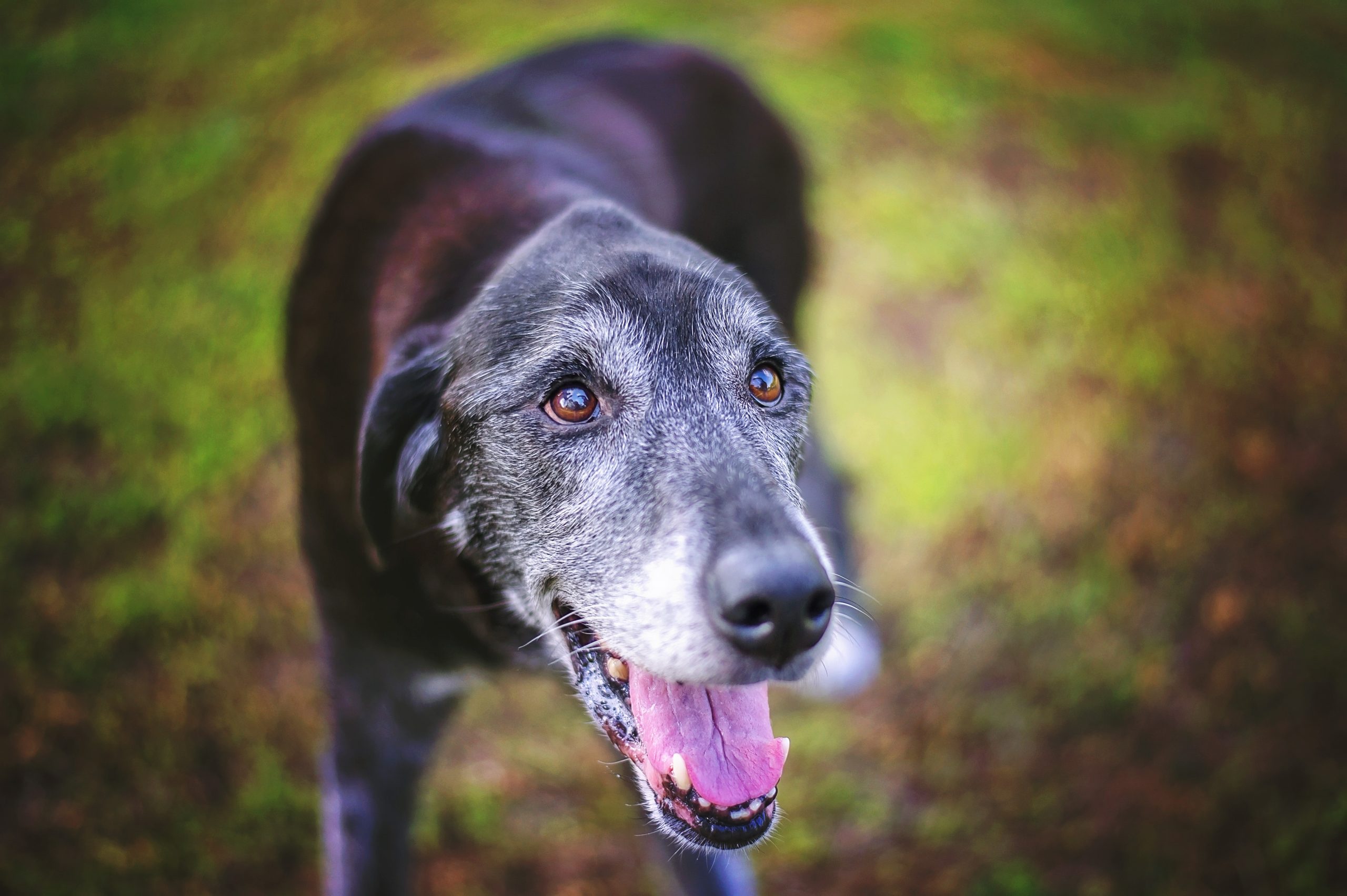-
Adopt
-
Veterinary Care
Services
Client Information
- What to Expect – Angell Boston
- Client Rights and Responsibilities
- Payments / Financial Assistance
- Pharmacy
- Client Policies
- Our Doctors
- Grief Support / Counseling
- Directions and Parking
- Helpful “How-to” Pet Care
Online Payments
Emergency: Boston
Emergency: Waltham
Poison Control Hotline
-
Programs & Resources
- Careers
-
Donate Now
Arthritis is a common condition in dogs, impacting about 20% of the canine population. If your furry friend is slow to rise, hesitant to jump, or stiff after play, arthritis could be to blame. While it isn’t always preventable, recognizing its triggers, symptoms, and treatment options can help you care for your dog more effectively. We spoke with MSPCA-Angell veterinary surgeon Dr. Sue Casale about what leads to arthritis and the best ways to help your dog lead a comfortable life.
population. If your furry friend is slow to rise, hesitant to jump, or stiff after play, arthritis could be to blame. While it isn’t always preventable, recognizing its triggers, symptoms, and treatment options can help you care for your dog more effectively. We spoke with MSPCA-Angell veterinary surgeon Dr. Sue Casale about what leads to arthritis and the best ways to help your dog lead a comfortable life.
What Is Canine Arthritis?
Canine arthritis is swelling and inflammation in the synovial joints, such as the hips, knees, and elbows. “There are different types of arthritis, but the most common form is osteoarthritis (OA),” explained Dr. Casale. Rarely the primary disease, OA is usually secondary to an underlying issue such as:
- Developmental diseases like elbow or hip dysplasia
- Joint laxity caused by injuries like cranial cruciate ligament rupture
- Trauma from fractures involving the joint
- Cartilage defects like osteochondritis dissecans
“The result of OA is the degradation and loss of articular cartilage, joint inflammation, and the formation of new bone around the joint,” explained Dr. Casale. “Dogs end up suffering from joint pain that is dull and aching as well as loss of range of motion.”
Symptoms of Arthritis in Dogs
Dogs with OA may display symptoms ranging from mild to severe, including:
- Lameness or limping
- Stiffness, especially after resting
- Reluctance to jump or climb stairs
- Exercise intolerance
- Muscle atrophy
- Joint swelling and a ‘crunchy’ feeling in the joints (crepitus)
“Typically, dogs will be sore when they first get up from resting, may ease out of the lameness with movement, but then experience more severe  lameness after activity,” said Dr. Casale. Symptoms of OA vary depending on the dog’s breed, age, and the stage of the disease. And while OA is a gradual disease, sudden lameness can occur if the affected joint undergoes additional trauma, such as falling or twisting of a joint, or excessive activity.
lameness after activity,” said Dr. Casale. Symptoms of OA vary depending on the dog’s breed, age, and the stage of the disease. And while OA is a gradual disease, sudden lameness can occur if the affected joint undergoes additional trauma, such as falling or twisting of a joint, or excessive activity.
When Do Dogs Develop Arthritis?
The onset of arthritis varies depending on its cause. Dogs with hip or elbow dysplasia can exhibit symptoms as early as one year of age. Injuries like cranial cruciate ligament rupture can lead to arthritis at any age.
Treatment Options for Canine Arthritis
Managing OA typically involves a multimodal approach and depends on the underlying cause. “If the cause is an unstable joint, such as a torn cranial cruciate ligament, the treatment is surgery to stabilize the knee,” said Dr. Casale. In severe hip dysplasia, a total hip replacement can be performed. “In conditions that are end-stage or not amenable to surgical treatment, medical management is initiated to attempt to alleviate the symptoms,” continued Dr. Casale.
Standard Treatments
- Weight management: Maintaining a lean body weight reduces stress on a dog’s joints.
- Exercise moderation: Too little movement can lead to stiffness, while too much can worsen symptoms.
- Pain relief medications: Nonsteroidal anti-inflammatory drugs (NSAIDs) are commonly used.
- Joint supplements: Glucosamine, chondroitin, and fish oil can support joint health.
Advanced Therapies
When the standard traditional treatments stop providing relief or the OA progresses, additional therapies can be considered:
Joint injections – Therapies like platelet-rich plasma (PRP), stem cells, or Synovetin OA injections can help reduce inflammation. “The MSPCA-Angell is one of just two Massachusetts veterinary hospitals authorized to perform this advanced form of long-lasting nuclear medicine,” said Dr. Casale. “Synovetin involves a single injection into the affected joint that can relieve pain for up to one full year.”
is one of just two Massachusetts veterinary hospitals authorized to perform this advanced form of long-lasting nuclear medicine,” said Dr. Casale. “Synovetin involves a single injection into the affected joint that can relieve pain for up to one full year.”
Adequan injections – An injectable supplement that supports cartilage health.
Librela – A new anti-nerve growth factor drug that provides pain relief, though some cases report worsening arthritis symptoms.
Keeping an Arthritic Dog Active
Regular exercise is beneficial for dogs with OA, but it must be carefully managed. “More studies are needed to determine the optimal amount and type,” explained Dr. Casale. “But if your dog can exercise without showing more lameness after the activity, that level of intensity is appropriate. If they’re sore after, it’s too much.”
Some low-intensity activities include:
- Short, gentle walks on soft surfaces
- Swimming or hydrotherapy for low-impact exercise
- Physical rehabilitation to maintain muscle mass
Preventing Arthritis in Dogs
While arthritis isn’t always preventable, there are steps you can take to reduce your dog’s risk:
- Maintain a healthy weight: Obesity is a significant risk factor for arthritis. Extra weight puts more stress on joints and promotes inflammation.
- Feed a balanced diet: Diets high in fat can increase the risk of joint disease
- Address injuries promptly: Treating conditions like ligament tears early can slow arthritis progression
“Unfortunately, some risk factors like genetics and age can’t be changed,” said Dr. Casale. “But keeping your pet at a healthy weight and addressing injuries quickly can make a big difference.”
Final Thoughts: A Happy Life for Your Arthritic Dog
Proper management of OA can help your dog maintain a good quality of life. Whether it’s through weight control, medication, physical therapy, or advanced treatments like Synovetin, there are many options to keep your pup comfortable and active.
If you suspect your dog has arthritis or would like to learn more about treatment options, please get in touch with our Primary Care service at the MSPCA-Angell for more information.





